The 1970s was an era of fashion rebellion, where previous rules crumbled beneath platform shoes and polyester power suits. As the decade progressed, many trends felt less like fads and more like evolutionary steps toward a new style consciousness—permanent departures from the constraints of previous generations. Magazines proclaimed the “timeless” nature of these bold new looks, and many of us invested accordingly, certain these garments would carry us through decades of fashion relevance. We couldn’t have been more wrong. Let’s take an affectionate but honest look at 13 fashion trends from the 1970s that we genuinely believed would stand the test of time but vanished faster than you could say “disco inferno.”
1. Leisure Suits

The leisure suit emerged as the perfect solution for the modern man seeking comfort without sacrificing style—a polyester revolution that promised to free American males from the tyranny of wool and ironing. Available in an eye-watering rainbow of colors from powder blue to chocolate brown to vibrant pistachio, these synthetic wonders featured wide lapels, patch pockets, and matching trousers that often flared dramatically from the knee. Men’s fashion magazines touted leisure suits as the “new standard in menswear,” a practical innovation that would permanently bridge the gap between formal business attire and casual weekend wear. HowStuffWorks goes into the particulars of how these outfits worked that made them such staples of decades passed.
By 1980, these polyester dream outfits had transitioned from closet staples to costume party punchlines, their scratchy fabric and tendency to trap body heat making them as uncomfortable as they were suddenly unfashionable. The leisure suit’s rapid fall from grace was so complete that thousands gathered dust in closets nationwide, their owners too embarrassed to wear them but too financially invested to discard them. Today, vintage leisure suits command surprisingly high prices from collectors and period film costumers, proving that everything old eventually becomes, if not timeless, at least ironically valuable.
2. Earth Shoes
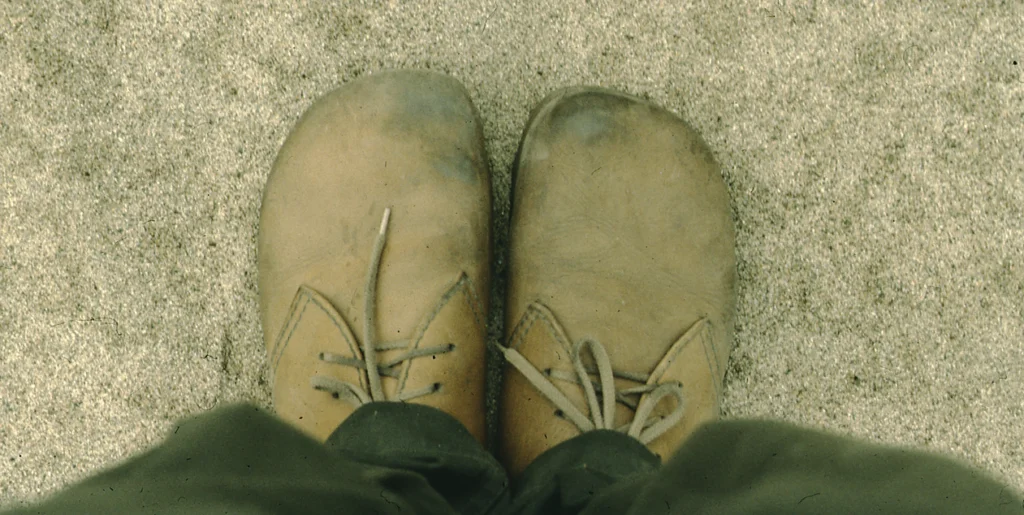
With their “negative heel technology” that positioned your toes higher than your heels, Earth Shoes promised not just fashion but a healthier way of walking based on observations of “natural” foot positioning of indigenous peoples. The bulbous, orthopedic-looking shoes became symbols of environmental consciousness and natural living despite being anything but subtle in appearance. Kalso Earth Shoes were embraced by the counterculture before going mainstream, with specialty stores opening nationwide to sell these supposed revolutionary steps in human evolution. TIME Magazine treks down memory lane to trace the history of these reliable shoes across the decades.
The awkward gait they produced—something between a forward lean and a subtle stumble—eventually proved less therapeutic than advertised, with some wearers reporting back pain and balance issues from the dramatic heel positioning. By the early 1980s, our collective posture returned to normal as Earth Shoes disappeared from fashion consciousness, their quasi-medical claims unable to sustain interest once the novelty wore off. The brand has been revived multiple times in various forms, but always with conventional heel heights, tacitly acknowledging that the original concept was less biomechanical breakthrough and more short-lived fashion experiment.
3. Velour Everything
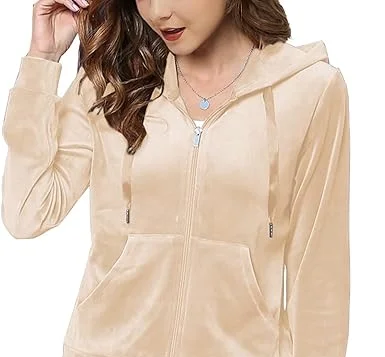
Velour emerged as the touchable textile of the decade, delivering a budget-friendly approximation of velvet that appeared everywhere from tracksuits to form-fitting jumpsuits to evening wear. The plush fabric with its distinctive sheen became a status symbol that crossed gender lines, with men’s velour shirts often unbuttoned to the navel to display chest hair and gold medallions. Fashion authorities assured consumers that velour’s comfort and versatility made it a “forever fabric” worth investing in across multiple garment categories. Pretty recently, Billboard actually reported on vibrant, colorful, and very distinctly velour tracksuits making a comeback, proving some trends never should have left after all.
The fabric’s tendency to simultaneously trap heat while creating uncomfortable static electricity helped accelerate its fashion demise, as did its unfortunate habit of developing irreparable shine marks wherever the material received regular friction. Velour’s fall from high-fashion acceptance to bargain bin rejection happened with stunning speed in the early 1980s, though it would experience limited revivals in the form of tracksuits during the early 2000s. The fabric’s persistent association with 1970s excess ensures that each attempted comeback remains brief and typically confined to leisurewear rather than its once-expansive presence across all clothing categories.
4. Platform Shoes (For Men)

Men’s platforms reached staggering heights in the 1970s, with chunky shoes adding three to four inches to male stature and featuring everything from goldfish swimming in clear heels to built-in flashing lights. Major shoe manufacturers assured fashion-conscious men that elevated footwear represented a permanent evolution in men’s fashion, not a passing trend. The male platform shoe movement reached from leather dress designs for the office to casual platforms for everyday wear, creating an entire generation of men temporarily taller than their driver’s license claimed.
The twisted ankles, practical mobility issues, and changing fashion winds conspired to topple men’s platforms by the decade’s end, returning male footwear to more modest proportions. What fashion writers once described as “the new normal in men’s elevation” quickly became a source of embarrassment, with countless platform shoes being quietly discarded during the conservative fashion reset of the early 1980s. While women’s platforms have periodically cycled back into fashion acceptance, men’s versions remain firmly locked in the 1970s, making the original marketing claims of timelessness particularly amusing in retrospect.
5. Dotted Swiss (For Adults)
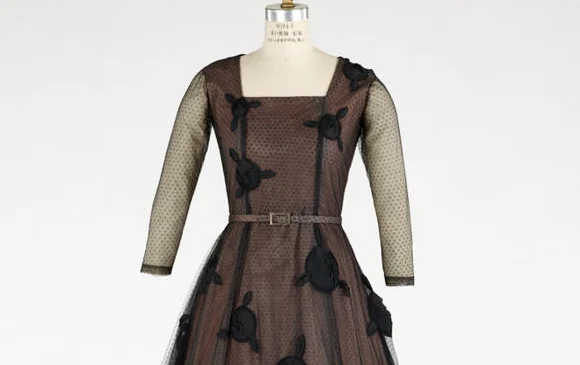
This delicate fabric featuring raised dots on translucent backgrounds made the improbable journey from children’s Easter dresses and nursery curtains to adult fashion prominence during the mid-1970s. Women’s wear collections featured dotted swiss prairie dresses, blouses, and even evening wear, while men’s lines included dotted swiss shirts that somehow managed to be simultaneously infantile and groovy. The fabric was embraced as “timelessly romantic” and “eternally elegant” in fashion magazines, positioned as a fabric that transcended trends.
The fabric’s association with Victorian dollhouses and baby clothing eventually reasserted itself, making adult wearers increasingly uncomfortable with their fashion choices as the decade ended. Dotted swiss for grown-ups retreated back to the children’s department almost overnight around 1980, with many adults later denying they ever embraced the infantilizing pattern despite photographic evidence to the contrary. The brief, confusing elevation of this traditionally juvenile fabric to adult fashion status demonstrates how thoroughly the 1970s scrambled established fashion hierarchies, temporarily obliterating the boundaries between sophisticated and saccharine.
6. Neckties Wide Enough to Double as Bibs
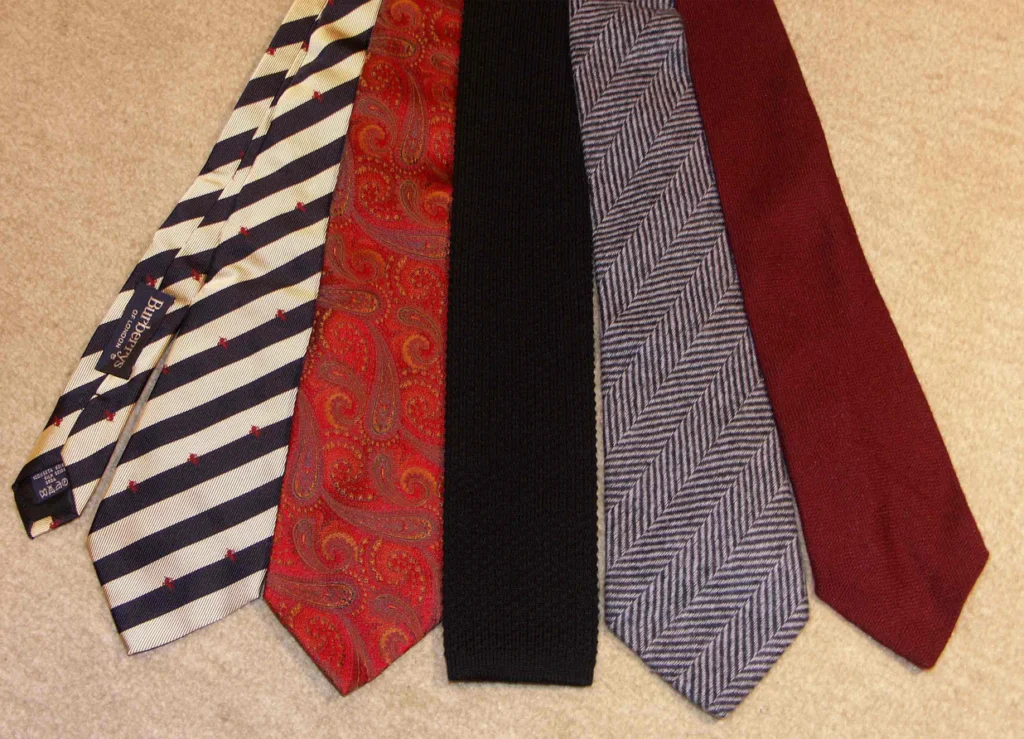
Men’s ties expanded to previously unimaginable widths during the 1970s, regularly exceeding five inches across at their widest point and featuring patterns bold enough to be visible from space. These fabric funnels pointing to men’s waistlines provided massive canvases for paisley swirls, geometric nightmares, and abstract patterns that often coordinated with equally bold shirt collars. Style publications insisted these expanded accessories represented the natural evolution of the necktie, making narrower versions look comically inadequate by comparison.
The enormous fabric requirement for these wide ties made them expensive to produce, which didn’t stop manufacturers from using cheaper polyester that often frayed at the edges after minimal wear. By the early 1980s, these vast swaths of fabric had disappeared from men’s wardrobes, with many being repurposed as costume pieces or donated to thrift stores where they languished for decades. Today, vintage clothing sellers market these super-wide ties to collectors and costume designers, preserving examples of what was once confidently declared “the permanent standard for men’s accessorizing.”
7. Qiana Nylon Shirts

Developed by DuPont as a silk alternative, Qiana nylon became the miracle fabric of the decade, flowing into disco shirts that somehow combined a silky drape with the ability to withstand discotheque conditions. The synthetic fabric’s unique properties allowed for vibrant printing, creating shirts with patterns ranging from abstract geometrics to scenic landscapes to photorealistic tiger faces stretched across men’s chests. Fashion experts declared Qiana the “fabric of the future,” promising it would remain in our wardrobes indefinitely due to its durability and luxurious feel.
Despite industry predictions, Qiana’s moment ended abruptly as the 1980s ushered in a return to natural fibers and more subdued styling in men’s shirts. The fabric’s tendency to create intense static electricity in dry conditions and its remarkable ability to amplify body odor when worn in dance clubs contributed to its rapid fall from fashion grace. DuPont discontinued Qiana production in 1981, making it one of the more spectacular failures in synthetic fabric history despite its brief period of total market domination.
8. His and Hers Matching Outfits

Couples in the 1970s frequently expressed their togetherness through coordinated outfits, from casual matching track suits to formal evening wear in identical fabrics and colors. Department stores created dedicated sections for “Couples Fashion,” where relationship partners could purchase corresponding polyester suits, identical western wear, or matching Hawaiian shirts that announced their romantic status from a considerable distance. Marriage magazines suggested that sartorial coordination represented the highest evolution of couple fashion, moving beyond mere complementary colors to full matching ensembles.
The psychological burden of such aggressive outfit coordination proved unsustainable, with many couples discovering that maintaining individual identity was worth sacrificing the visual impact of arriving at parties dressed as fabric twins. As divorce rates climbed in the late 1970s, matching couples outfits declined proportionally, reflecting changing attitudes about relationships and personal expression. While subtle outfit coordination has remained acceptable in limited contexts, the full-matched couples look is now recognized as a visual red flag suggesting potential relationship codependency rather than aspirational romantic harmony.
9. Cheesecloth Shirts and Blouses

This loosely woven cotton fabric—traditionally used for straining curds in cheese production—became improbably fashionable as shirts, blouses, and even flowing dresses throughout the 1970s. Available in natural unbleached tones or dyed in earthy hues, cheesecloth tops projected a handcrafted, back-to-nature aesthetic despite often being mass-produced with synthetic thread reinforcement. Fashion writers described cheesecloth as the perfect blend of natural materials and visual interest, predicting its textured appearance would become a wardrobe constant for the eco-conscious consumer.
The fabric’s extreme wrinkling, tendency to shrink dramatically when washed, and generally poor durability eventually revealed why industrial food preparation materials don’t typically transition successfully to garment use. Cheesecloth clothing rarely survived more than a season of regular wear, with the loose weave snagging on everything from car door handles to wristwatches. The return to more structured clothing in the early 1980s relegated cheesecloth back to kitchen drawers, where it has sensibly remained ever since, fulfilling its intended purpose of cheese production rather than personal adornment.
10. Rainbow Everything
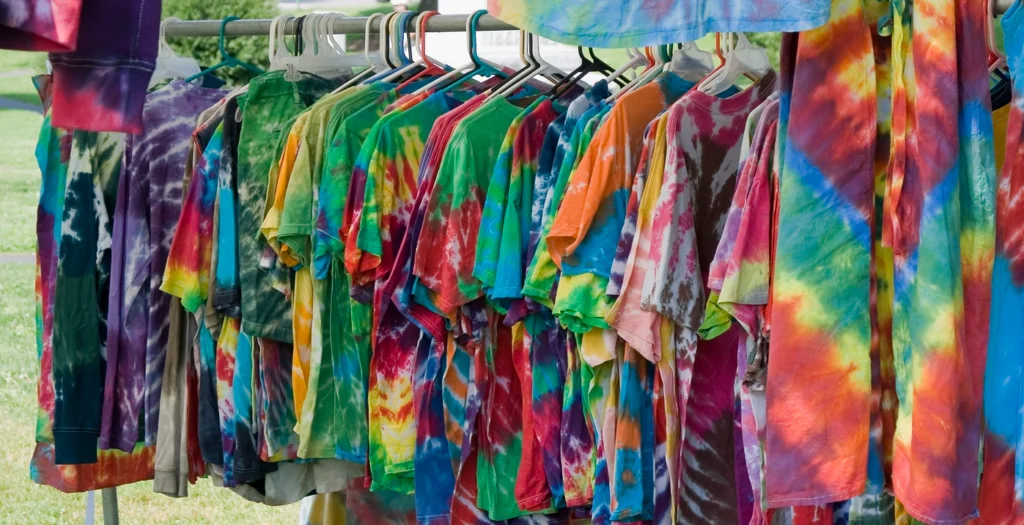
The rainbow emerged as the ultimate symbol of 1970s optimism, appearing on everything from t-shirts to suspenders to knee socks as people embraced multi-colored brightness after the more restrained palettes of previous decades. Rainbow motifs adorned household items, accessories, and even appliances, with fashion magazines assuring consumers that rainbow patterns represented a “timeless celebration of color” that would never go out of style. The peak of rainbow mania featured suspenders, shoelaces, and belts that displayed all spectral colors in orderly succession, often coordinated with single-color base garments.
What fashion writers described as “universally flattering” and “endlessly cheerful” soon began to seem childish and excessive as color trends shifted toward the power dressing of the 1980s. The rainbow’s association with children’s toys and nursery decor reasserted itself, making adults increasingly reluctant to dress like human prisms. While rainbow motifs have periodically returned as fashion statements, they never regained the ubiquitous adult presence they enjoyed during the 1970s, when serious businessmen unironically wore rainbow suspenders to board meetings.
11. Ponchos as Everyday Wear
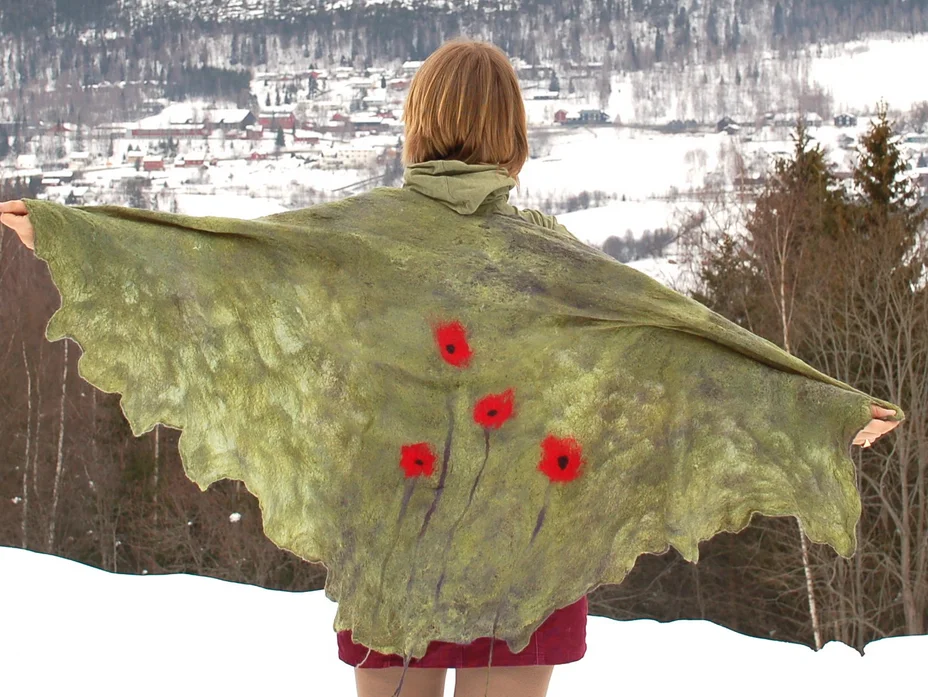
Ponchos transitioned from specialized rain gear and Western wear to mainstream fashion statements, appearing in materials ranging from acrylic knits to suede with elaborate fringe detailing. These versatile garments were marketed as “seasonless style solutions” that could be layered over almost anything to create an instant bohemian look. Fashion magazines declared ponchos “perennial wardrobe classics” that would remain relevant indefinitely due to their simple construction and flattering lines.
The reality of poncho ownership proved less practical than advertising suggested, with the armless design making everyday activities like driving, eating, and reaching for objects unexpectedly challenging. The tent-like silhouette that fashion writers described as “universally flattering” ultimately proved unflattering on most body types, creating an unstructured bulk that obscured rather than enhanced. Ponchos retreated to specialty wear by the early 1980s, returning to their proper roles as rain protection, beach cover-ups, and occasional bohemian fashion statements rather than everyday garments.
12. Appliquéd Denim
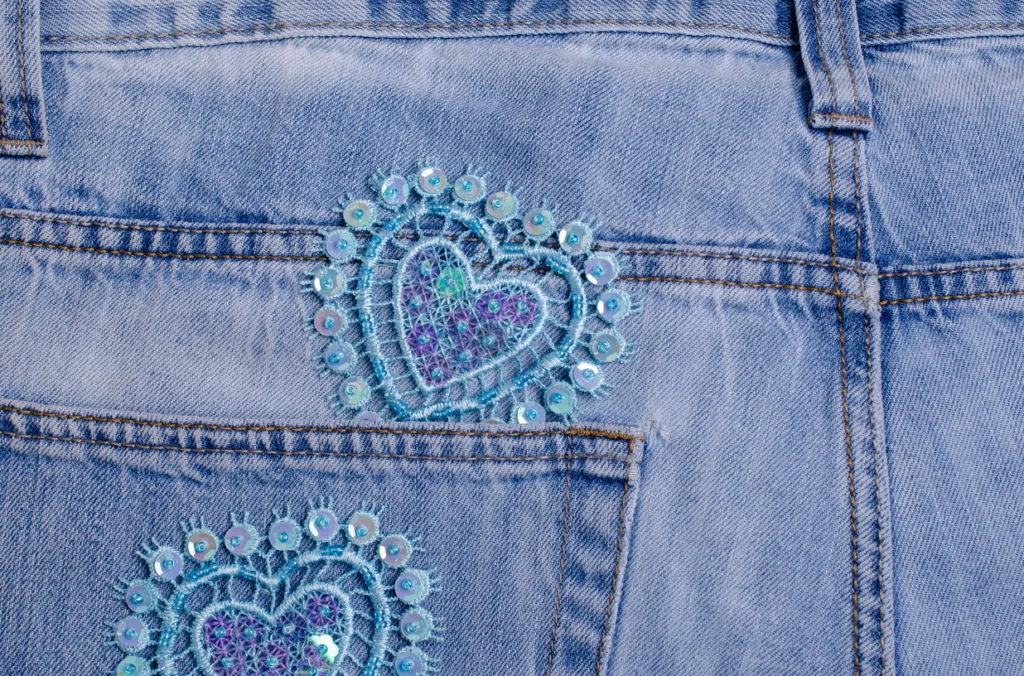
Denim in the 1970s served as a canvas for personal expression, with jeans and jackets receiving elaborate embellishments including embroidery, studs, painted designs, and sewn-on fabric elements ranging from rainbows to zodiac symbols. Home sewing magazines published countless patterns for personalized denim embellishment, suggesting that decorated jeans represented an investment in “wearable art” that would appreciate in both personal and actual value over time. The most elaborate examples featured entire scenes constructed across the back of jackets or running down pant legs, turning ordinary denim into narrative garments.
The time-intensive nature of these embellishments made them particularly painful to discard when fashion winds shifted toward designer denim with emphasis on brand names rather than personal customization. By the early 1980s, heavily decorated denim signaled a failure to evolve fashionably, with many elaborately personalized garments being relegated to the back of closets or repurposed as craft materials. The current value of vintage 1970s hand-embellished denim among collectors suggests the “wearable art” prediction wasn’t entirely wrong—just premature by about four decades.
13. Sweater Vests for Everyone

The humble sweater vest experienced an unprecedented fashion renaissance during the 1970s, moving beyond its academic associations to become a unisex staple available in every conceivable color, pattern, and texture. Men paired sweater vests with wide-collared shirts and broader-than-sensible ties, while women wore them over blouses or even directly against the skin as fashion magazines declared them “essential layering pieces that will never lose relevance.” The combination of sleeveless convenience and torso warming made them particularly popular in energy-crisis America, where thermostats were lowered to conserve fuel.
The sleeveless garment’s brief moment as a fashion essential rather than a practical layering piece came to an abrupt end with the 1980s power dressing revolution, relegating sweater vests back to their traditional roles in preppy, academic, and golf course environments. What fashion writers had positioned as “the perfect balance of casual and dressy” failed the test of time, with the vest’s truncated nature making it perpetually vulnerable to proportion changes in pants and shirts. The sweater vest never disappeared entirely but retreated to specialty status, making the 1970s the only decade when these sleeveless knits were genuinely considered universally fashionable across age groups and style tribes.
The fashion landscape of the 1970s represented an extraordinary moment of experimentation, where traditional rules were not so much broken as comprehensively shattered. The decade’s unique combination of synthetic fabric innovation, counterculture mainstreaming, and post-1960s identity exploration created clothing that felt revolutionary rather than merely trendy. Perhaps that’s why so many believed these styles would endure—they were tied to cultural movements that seemed permanent departures from the past rather than temporary detours. Looking back at these “timeless” trends with modern eyes reminds us that fashion’s only true constant is change itself. The polyester has yellowed, the platforms have toppled, and the leisure suits have been relegated to costume parties, but the bold spirit of 1970s self-expression through clothing remains oddly inspirational, even as we’re grateful that most of these trends have not, in fact, endured.


